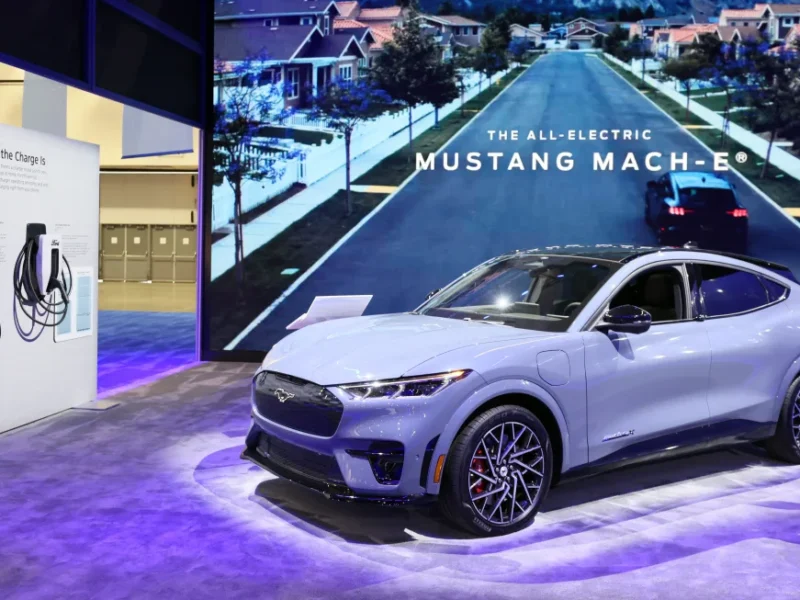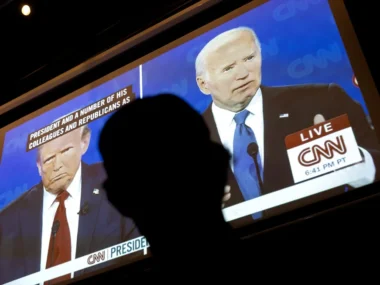Tesla has been reducing prices, and Ford recently lowered the price of its Mustang Mach-E while also scaling back production of its electric pickup. General Motors is reportedly considering reintroducing plug-in hybrids, potentially deviating from its previous commitment to transitioning directly to electric vehicles (EVs).
Additionally, the Environmental Protection Agency (EPA) is contemplating easing requirements for automakers to increase EV sales, signaling a potential shift away from aggressive plans to move away from gasoline-powered vehicles.
Despite these developments, the American EV market is not collapsing. In the last quarter of 2023, EV sales surged by 40% compared to the previous year, reaching a record high of over 1 million units in the United States.
However, there remains a discrepancy between expectations and actual sales. Bloomberg New Energy Finance (BNEF) projected sales of 1.7 million plug-in vehicles in 2023, but only 1.46 million were sold. This trend has prompted the industry to revise downward its future sales estimates.
Several factors contribute to this gap, including vehicle pricing, insufficient charging infrastructure, and complex tax credit regulations.
Expensive costs
The majority of electric vehicles currently available in the American market tend to be positioned towards the higher end of the price spectrum.
Tyson Jominy, an industry analyst with J.D. Power, noted that vehicles like the Kia EV9 and Cadillac Lyriq, priced between $50,000 and $60,000, are now competing in a segment where they wouldn’t typically overlap.
Moreover, Corey Cantor, an industry analyst with Bloomberg New Energy Finance, highlighted the limited selection of body styles in the EV market. While SUVs dominate, there’s a scarcity of sedans or compact cars, limiting options for consumers seeking alternative vehicle types.
As the market for EVs expands beyond enthusiasts to reach a broader customer base, affordability becomes a significant factor. Ford CEO Jim Farley emphasized this shift, stating that mainstream customers are not willing to pay a premium for EVs. This realization prompted Ford to reduce prices for the Mach-E SUV and initiate the development of a more cost-effective EV engineering platform for future models.
Charging is required
The lack of public charging infrastructure remains a significant hurdle for electric vehicle adoption. The National Renewable Energy Laboratory estimates that the US will require 182,000 fast chargers by 2030, yet there are currently fewer than 40,000 nationwide, with a significant portion concentrated in California.
Furthermore, existing EV chargers often receive low reliability ratings from consumers, according to J.D. Power surveys.
The availability of public charging and vehicle pricing are interconnected issues. Affluent individuals who can afford luxury EVs are more likely to have access to home charging solutions, such as private garages. Conversely, public chargers are essential for individuals who cannot afford expensive vehicles or do not have access to private parking at home.
In response to these challenges, automakers are taking action by leveraging federal funds and investing their own resources to expand charging infrastructure. A consortium comprising BMW, GM, Honda, Hyundai, Kia, Mercedes-Benz, and Stellantis plans to install approximately 30,000 chargers across the US and Canada.
Additionally, major automakers in the US have agreed to adopt a standardized charging protocol, aligning with the standard used by Tesla, the leading EV manufacturer. This standardization will streamline the charging experience for consumers.
However, significant progress is still needed to meet consumer demands. Carlos Tavares, CEO of Stellantis, emphasized the necessity for ubiquitous public charging infrastructure, stating that chargers should be readily available at everyday locations like malls, supermarkets, restaurants, and gyms.
While the current state of EV chargers in the US falls short of this ideal, there is optimism for improvement. Valdez Streaty anticipates exponential growth in charging infrastructure in the coming years, with a focus on enhancing reliability to meet consumer needs effectively.
Confusion regarding credits
Numerous significant tax credits are accessible to assist in reducing the cost of buying electric vehicles, although the regulations are intricate. Certain credits have limitations based on factors such as the vehicle’s place of manufacture, the origin of the battery pack and its components, the vehicle’s price, and the buyer’s household income.
As automakers navigate the intricate application process, more models are becoming eligible for these credits. Furthermore, starting this year, customers have the option to claim the tax credit as an instant rebate at the time of purchase rather than waiting until tax filing season.
Leasing presents another avenue for consumers to benefit from tax credits. Due to specific provisions in tax laws, leased vehicles are generally exempt from most federal tax credit restrictions, prompting many automakers to offer the tax credit as an incentive for leasing.
Valdez Streaty commented on this trend, stating, “We’re going to see leasing take off, and that’s because of the loophole, but also because consumers are uncertain about whether they want to purchase or are ready to purchase an electric vehicle.”











